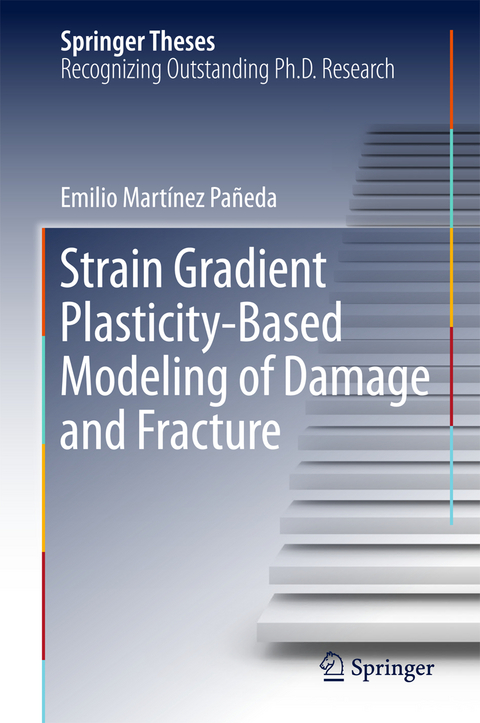
Strain Gradient Plasticity-Based Modeling of Damage and Fracture
Springer International Publishing (Verlag)
978-3-319-63383-1 (ISBN)
This book provides a comprehensive introduction to numerical modeling of size effects in metal plasticity. The main classes of strain gradient plasticity formulations are described and efficiently implemented in the context of the finite element method. A robust numerical framework is presented and employed to investigate the role of strain gradients on structural integrity assessment. The results obtained reveal the need of incorporating the influence on geometrically necessary dislocations in the modeling of various damage mechanisms. Large gradients of plastic strain increase dislocation density, promoting strain hardening and elevating crack tip stresses. This stress elevation is quantified under both infinitesimal and finite deformation theories, rationalizing the experimental observation of cleavage fracture in the presence of significant plastic flow. Gradient-enhanced modeling of crack growth resistance, hydrogen diffusion and environmentally assisted cracking highlighted the relevance of an appropriate characterization of the mechanical response at the small scales involved in crack tip deformation. Particularly promising predictions are attained in the field of hydrogen embrittlement. The research has been conducted at the Universities of Cambridge, Oviedo, Luxembourg, and the Technical University of Denmark, in a collaborative effort to understand, model and optimize the mechanical response of engineering materials.
Part.-Introduction.- Numerical framework.- Gradient plasticity formulations.- Numerical implementation.- Part ii.- Results.- Mechanism based crack tip characterization.- On fracture infinite strain gradient plasticity.- The role of energetic and dissipative length parameters.- Hydrogen diffusion towards the fracture process zone.- SGP-Based modelling of heac.- Conclusions.-Bibliography.
| Erscheinungsdatum | 15.09.2017 |
|---|---|
| Reihe/Serie | Springer Theses |
| Zusatzinfo | XVII, 159 p. 66 illus., 47 illus. in color. |
| Verlagsort | Cham |
| Sprache | englisch |
| Maße | 155 x 235 mm |
| Gewicht | 432 g |
| Themenwelt | Mathematik / Informatik ► Mathematik ► Wahrscheinlichkeit / Kombinatorik |
| Naturwissenschaften ► Physik / Astronomie | |
| Technik ► Maschinenbau | |
| Schlagworte | Cohesive zone model • Computational micromechanics • Continuum Mechanics and Mechanics of Materials • continuum modeling • Corrosion • Crack Tip Mechanics • Energetic And Dissipative Length Scales • Engineering • Engineering: general • extended finite element method • Finite Deformation Theory • finite element analysis • Geometrically Necessary Dislocations (GNDs) • Gradient Plasticity • Hydrogen Assisted Cracking • hydrogen embrittlement • Material Failure Mechanisms • Material Length Scale • Mathematical Physics • mechanical engineering & materials • Mechanical engineering & materials • Metallic materials • metals technology / metallurgy • Multi-scale Material Modeling • Numerical and Computational Physics, Simulation • strain gradient plasticity • Stress-assisted Hydrogen Diffusion • Taylor Dislocation Model |
| ISBN-10 | 3-319-63383-X / 331963383X |
| ISBN-13 | 978-3-319-63383-1 / 9783319633831 |
| Zustand | Neuware |
| Haben Sie eine Frage zum Produkt? |
aus dem Bereich


